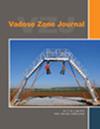生物炭主要通过改变土壤结构而非其内部孔隙率来改变土壤的物理性质
IF 2.8
3区 地球科学
Q3 ENVIRONMENTAL SCIENCES
引用次数: 0
摘要
除了固碳潜力外,施用生物炭通常还能改善土壤的物理性质,但其影响程度和内在机制仍存在争议,并取决于土壤类型、生物炭施用量和施用年限。因此,我们的目标是确定生物炭施用量和施用年限对温带气候下农业土壤物理性质的影响。在粉质壤土和砂质壤土上,我们比较了富含新鲜生物炭(1% 和 2% w/w)或百年生物炭(0.5%-1% w/w;19 世纪窑址)的土壤样本与不含生物炭的土壤样本的物理性质。生物炭孔隙网络特征是通过氦气比重测定法、汞侵入孔隙测定法、扫描电子显微镜观察和电子分散 X 射线光谱法确定的,而生物炭颗粒在土壤结构中的位置则是通过光学显微镜观察分析的。施用新鲜生物炭后,容重降低了 16.8%,饱和含水量提高了 16.0%,大孔率提高了 78.8%。这些影响归因于土壤结构的改善,而不是生物炭的孔隙度。土壤类型和生物炭施用量的影响有限。从长期来看,生物炭的效果大多不显著,这可能是由于生物炭在窑址中的含量较低,以及其内部孔隙被粘土颗粒堵塞。因此,生物炭能够在短期内改善土壤的某些物理特性,但这些影响在长期内已无法检测到。因此,进一步调查在土壤中添加生物炭后几十年内土壤物理特性的时间变化率似乎尤为重要。本文章由计算机程序翻译,如有差异,请以英文原文为准。
Biochar modifies soil physical properties mostly through changes in soil structure rather than through its internal porosity
Besides its carbon sequestration potential, biochar application generally improves soil physical properties, but the magnitude of its impact and the underlying mechanisms remain debated and depend on soil type, biochar application rate, and age. The objective was therefore to determine the effect of biochar application rate and age on physical properties of agricultural soils in a temperate climate. On a silt loam and a sandy loam soils, we compared the physical properties of fresh biochar (1% and 2% w/w) or century-old biochar (0.5%–1% w/w; 19th-century kiln sites)-enriched soil samples with biochar-free soil samples. Biochar pore network characteristics were determined using helium pycnometry, mercury intrusion porosimetry, scanning electron microscopy observation, and electron dispersive X-ray spectrometry, whereas location of biochar particles within soil structure was analyzed using optical microscopy observations. Fresh biochar application decreased bulk density by 16.8% and increased saturated water content by 16.0% and macroporosity by 78.8%. These effects were attributed to soil structure improvement rather than to biochar porosity. Soil type and biochar application rate had a limited impact. In the long-term, biochar effects were mostly nonsignificant, which might result from its fairly low content in kiln sites and from the clogging of its internal porosity by clay particles. Biochar was thus able to improve some soil physical properties in the short-term, but these effects could no longer be detected in the very long-term. Further investigating the time rate of change in soil physical properties over several decades following biochar additions to soil would therefore seem particularly relevant.
求助全文
通过发布文献求助,成功后即可免费获取论文全文。
去求助
来源期刊

Vadose Zone Journal
环境科学-环境科学
CiteScore
5.60
自引率
7.10%
发文量
61
审稿时长
3.8 months
期刊介绍:
Vadose Zone Journal is a unique publication outlet for interdisciplinary research and assessment of the vadose zone, the portion of the Critical Zone that comprises the Earth’s critical living surface down to groundwater. It is a peer-reviewed, international journal publishing reviews, original research, and special sections across a wide range of disciplines. Vadose Zone Journal reports fundamental and applied research from disciplinary and multidisciplinary investigations, including assessment and policy analyses, of the mostly unsaturated zone between the soil surface and the groundwater table. The goal is to disseminate information to facilitate science-based decision-making and sustainable management of the vadose zone. Examples of topic areas suitable for VZJ are variably saturated fluid flow, heat and solute transport in granular and fractured media, flow processes in the capillary fringe at or near the water table, water table management, regional and global climate change impacts on the vadose zone, carbon sequestration, design and performance of waste disposal facilities, long-term stewardship of contaminated sites in the vadose zone, biogeochemical transformation processes, microbial processes in shallow and deep formations, bioremediation, and the fate and transport of radionuclides, inorganic and organic chemicals, colloids, viruses, and microorganisms. Articles in VZJ also address yet-to-be-resolved issues, such as how to quantify heterogeneity of subsurface processes and properties, and how to couple physical, chemical, and biological processes across a range of spatial scales from the molecular to the global.
 求助内容:
求助内容: 应助结果提醒方式:
应助结果提醒方式:


